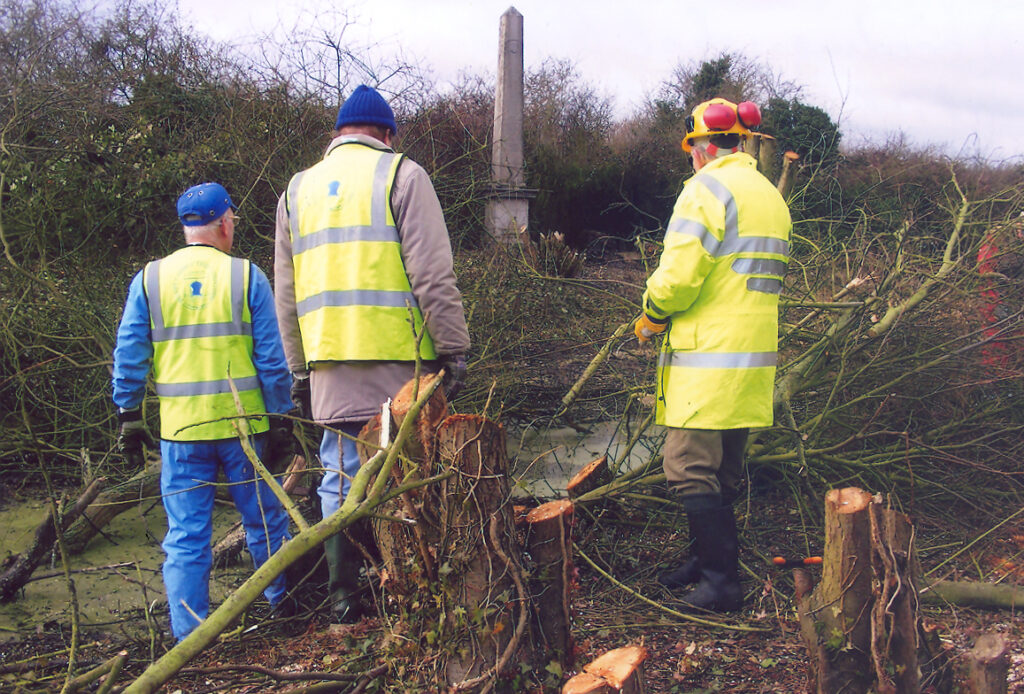The stone obelisk was erected in 1829 to mark the half-way point on the canal and the boundary of jurisdiction between the cities of London and Rochester, after Rochester laid claim to half the water in the then called ‘Medway and Thames Canal’.
A variety of monuments, obelisks and plaques were erected on canals and railways to mark the old boundaries of the city of London – some 250 were erected in total. Most were made from either cast iron or stone. This obelisk was one of the largest to be used and is made from solid granite. It stands 15 feet high and can also be seen from the railway a quarter of a mile away.
The cities’ coats of arms are still just visible at the top of the obelisk and the inscription beneath states that the monument was erected by the ‘Right Hon. Bill Thompson, Lord Mayor of London and the Worshipful John Gibbs, Mayor of Rochester’.
Work to clear and restore the monument was carried out in the 1990’s by Groundwork Kent Thameside with help from volunteers from the Thames and Medway Canal Association, the Ramblers Association and with kind permission of British Rail.
More Recently, working parties have cleared brambles and undergrowth from around the monument and hedges have been laid.


